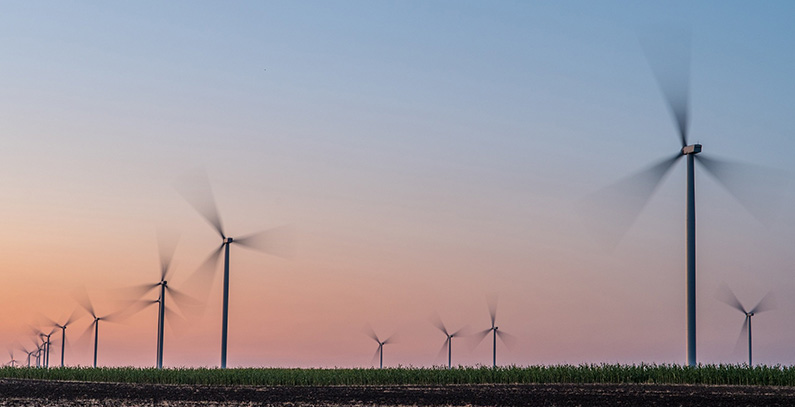
Photo: Largest wind farm in Serbia - ČIbuk 1 was officially launched in 2019 (Taaleri Energia)
Total electricity production under Serbia’s subsidy scheme for privileged power producers, mainly from renewables, doubled last year from 638 GWh to 1,361 GWh.
According to the report produced by the state-owned Electric Power Industry of Serbia (EPS), in 2018 privileged and temporary privileged producers generated the most of electricity in hydropower plants, in wind farms and in natural gas power plants.
In 2017, total production was 426 GWh.
Total amount and structure of the electricity produced under the support system in 2018:
- Hydro – 265 GWh – 42.3%c
- Wind – 150 GWh – 23.9%
- Biomass – 95 GWh – 15.2%
- Natural gas – 100 GWh – 15.9%
- Solar – 10 GWh – 1.6%
The energy mix changed last year when three wind farms were commissioned: Čibuk 1– 158 MW, Kovačica–104.5 MW, and Košava – 69 MW thus taking over the lead with 892 GWh out of total 1,361 GWh of electricity produced from renewables.
Total amount and structure of the electricity produced under the support system in 2019:
- Wind – 892 GWh – 65.5%
- Hydro – 230 GWh – 16.9%
- Biomass – 136 GWh – 9.9%
- Natural gas – 91 GWh – 6.6%
- Solar – 10 GWh – 0.8%
Privileged producers were paid RSD 7.4 billion (EUR 62.8 million) in 2018, while in 2019 the amount almost doubled – RSD 13.6 billion (EUR 115.5 million).
Delay in the development of renewable energy?
The growth of output by privileged power producers is the main barometer of the development of renewables in Serbia. Total electricity generation in 2019 was 36,000 GWh, matched by consumption.
It could be said that the rise came as a result of the Decree on incentives for the production of electricity from renewable energy sources and high-efficiency heat and power cogeneration under which all privileged power producers have been receiving feed-in tariffs.
However, on December 31, 2019, the decree expired. Three and a half months later, the Government is silent on its next steps: it still hasn’t introduced new supporting mechanism for renewables nor it has provided any official information on when exactly this is to take place. Earlier in 2018, authorities announced changes to the renewables’ incentive model and they claimed last year that auctions for wind farms and solar power plants would be rolled out.
Further to this, as it explained, due to the introduction of the state of emergency amid coronavirus, the Government of Serbia has decided to suspend the effect of the power purchase agreements between EPS and privileged producers.


















Be the first one to comment on this article.